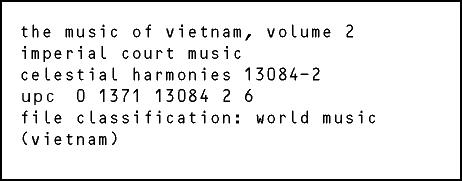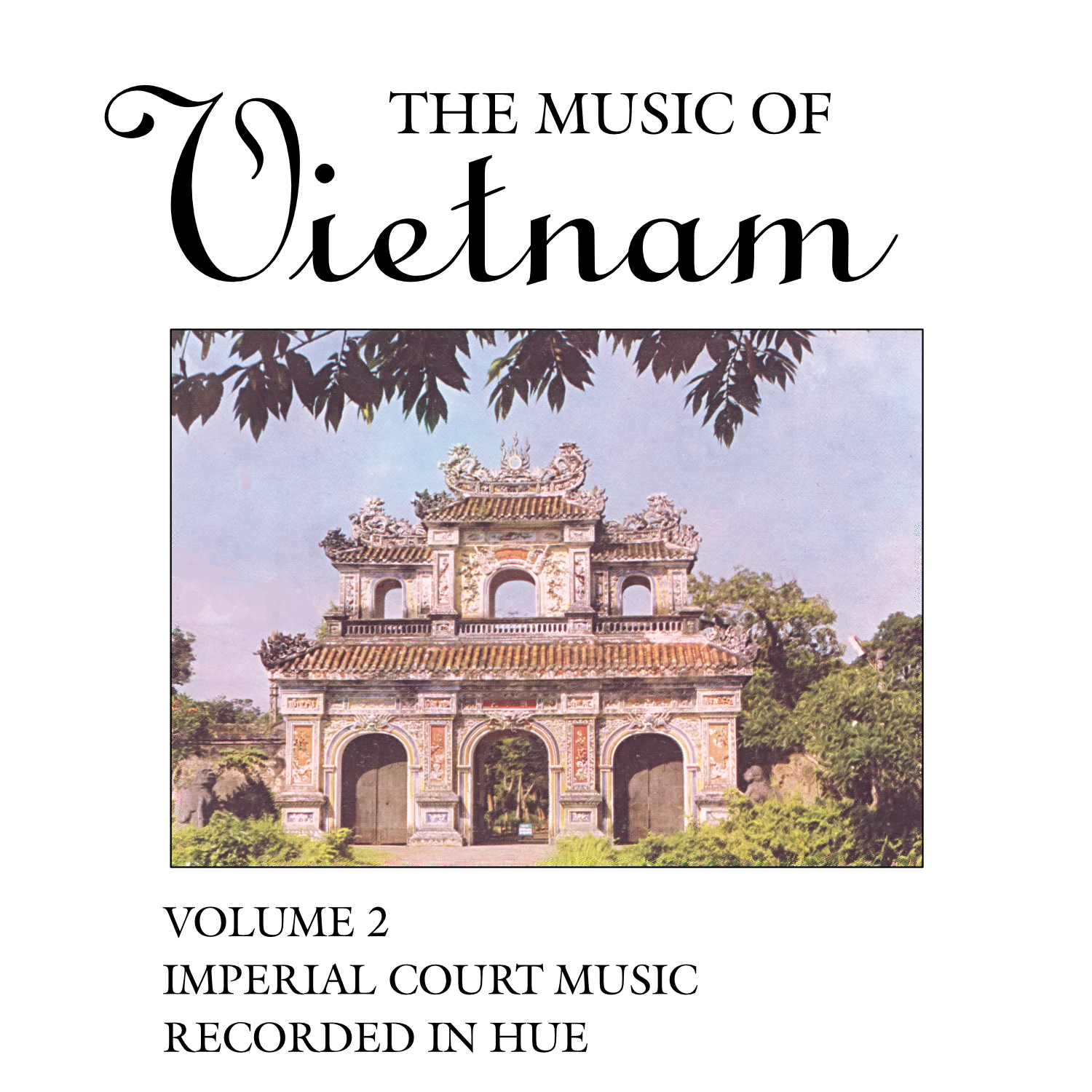 |
|||||||||||||||||||||||||||||||||||||||
 
the projectThe Music of Vietnam Volume 2 presents the
carefully preserved music of the Vietnamese Imperial Palace and Court,
recorded in Hue. As opposed to Volumes 1.1 and
1.2 of the Music of Vietnam series, which encompass the traditional
music of the Vietnamese people, Volume 2 captures the essence of Vietnamese
Imperial culture, now an honored component of the country's rich and
colorful history.
These songs which accompanied ceremonial, congratulatory and interpretive dances, paint a fascinating picture of the ancient culture of which they are a part. The words of the songs praise offerings to Buddha, wish a harmonious life to an Imperial bride and groom, or celebrate the courageous actions of two legendary heroines. Though the words (many of which are translated in the liner notes) may not be understood by every listener, to hear the music is enough to conjure up beautiful images of costumed dancers holding lotus-shaped lanterns. One can almost see the dragon and the tiger which meet in the Tu Linh Dance, or imagine the female heroines in war dress: protective vests and armored trousers, swords in hand. Each of the pieces included in the recording posesses a symbolic meaning developed over a thousand years, influenced by many dynasties. The Imperial music of Volume 2 represents a part of the country's history as integral as the music of the people contained in Volumes 1.1 and 1.2. the artistsThis recording features the performance of the Hue
Traditional Art Troupe. Artistic direction of the troupe and of this
recording is provided by the group's leader,
This recording is produced by tracklist
|
|||||||||||||||||||||||||||||||||||||||
|
|
|||||||||||||||||||||||||||||||||||||||
 |


